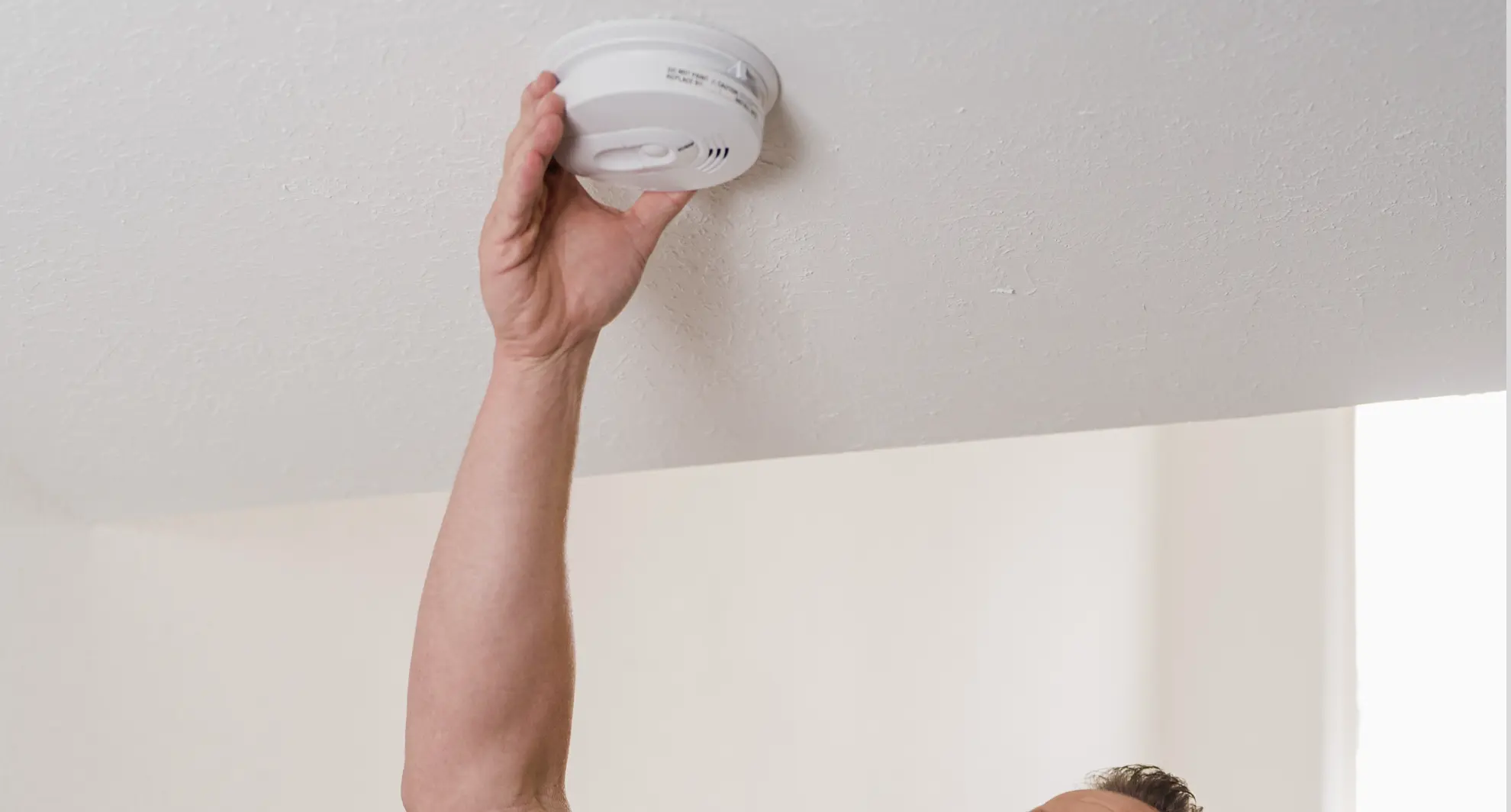
Mr. Electric explains that carbon monoxide detectors do expire and should be replaced regularly for safety.
|
According to the Centers for Disease Control, accidental carbon monoxide poisoning sends more than 50,000 people in the U.S. to hospitals every year, and tragically, it kills at least 450 people annually. Fortunately, though, carbon monoxide poisoning is entirely preventable! The first line of defense: a working carbon monoxide detector on each floor of your home.
What is Carbon Monoxide?
Often referred to as “the invisible killer,” carbon monoxide (CO) is a colorless, odorless gas produced when gasoline, propane, wood, charcoal, or other fuels burn incompletely. A faulty furnace or hot water heater can quickly lead to high CO levels in a home. Using gas-powered tools or appliances indoors or running a vehicle in an enclosed space can also lead to deadly CO build-ups.
Symptoms of Carbon Monoxide Poisoning
Symptoms of CO poisoning include dizziness, nausea, headache, and shortness of breath. With continued exposure, unconsciousness and death can result. Children and pets may be the first to show symptoms because they tend to take more frequent breaths than adults. If you notice that symptoms seem to clear up once you leave the home, or if everyone in the home is experiencing symptoms, leave immediately and seek medical attention. Do not return to your home until your carbon monoxide levels and any potential leaks have been checked out by your local fire department.

Tips to Keep Your Carbon Monoxide Detector Working
To minimize the risk of carbon monoxide poisoning, make sure that your carbon monoxide detectors are functioning properly.
Check the Expiration Date of Your Carbon Monoxide Detector
Do carbon monoxide detectors expire? Yes, they do. Typically, there will be an expiration date stamped on the back of the unit. How do I know if my carbon monoxide detector is expired? If your unit is nearing its expiration date, either replace it, or run it through a test cycle to ensure that it is working properly.
How long are carbon monoxide detectors good for? Although some manufacturers say ten years, most experts recommend replacing units after five to seven years of use, regardless of expiration date.
Install New Carbon Monoxide Detector Batteries At Least Every Six Months
Many people change batteries every time they change their clocks for daylight savings time, or you can add reminders to your calendar at six-month intervals.
If your carbon monoxide detectors are wired or plugged in to operate on your home’s electrical system, install backup batteries so that they will work during power outages. Don’t forget to test and replace the batteries regularly–especially if your CO detector is hardwired.
Clean Your Carbon Monoxide Detectors At Least a Few Times a Year
Wipe the exterior with a soft, dry cloth. Use compressed/canned air or a vacuum with a soft brush to gently clear dust from around the sensor. Consider adding cleaning and checking your carbon monoxide filters to your seasonal cleaning list.
How to Test Carbon Monoxide Detectors
Knowing how to test carbon monoxide detectors is essential. Most detectors have a test button on the front of the unit. To test the unit, push and hold the button for approximately 20 seconds. You should hear at least two loud beeps. (Check manufacturer instructions for specific details.) If the unit does not beep, try again. If it still fails to sound, replace it immediately. Check with your local fire department regarding appropriate disposal or recycling options.
Other Carbon Monoxide Detector Testing Tips
- Test carbon monoxide detectors at least once per month. Since it may be easy to forget, designate specific days (the 1st of the month, or the 4th Friday of the month, for example) and note it on your calendar.
- How long are carbon monoxide detectors good for? Although some manufacturers say ten years, most experts recommend replacing units after five to seven years of use, regardless of expiration date.
- If your detectors are linked to a home alarm company, let them know you are conducting a test beforehand. They may recommend additional steps to ensure that units will notify them in an emergency.
- If possible, ask family members to listen from their bedrooms and/or remote areas of the house to make sure the alarm is loud enough to be heard throughout your home.
Rely on a Service Professional for Expert Carbon Monoxide Detector Installation
The service professionals at Mr. Electric® care about the health and safety of you and your family. If you want to be sure that your carbon monoxide detectors are properly installed, let our service professionals take care of the job for you! And with the Neighborly Done Right Promise®, we ensure you’ll be happy with our work. Schedule an appointment today or call us to connect with your local Mr. Electric.
This article is intended for general guidance only and is not applicable to every situation. You are responsible for determining the proper course of action for your property and situation. Mr. Electric is not responsible for any damages that occur as a result of advice and/or guidance derived from its blog content.
Some Mr. Electric services vary by location. Contact your local Mr. Electric franchise for more information.

